Napoleon's St Helena

Beez Neez now Chy Whella
Big Bear and Pepe Millard
Fri 14 Feb 2020 23:37
|
The St Helena of
Napoleon
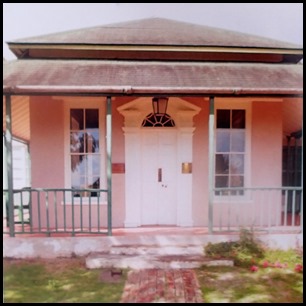 Napoleon was exiled to St
Helena (he had previously escaped from Elba so the British wanted somewhere
more secure and further afield. St Helena is 4,486 miles south of Paris,
separating him from his followers). Exiled by the British government after
his defeat at Waterloo in June 1815. He and his French entourage sailed from
Plymouth, England on the 7th of August on board the HMS Northumberland and after
two months at sea the Emperor landed at Jamestown, the capital of St Helena,
shortly after dusk on the 17th of October 1815. He spent one night in
Jamestown.
Napoleon spent his first two and
a half months on the island at Briars Pavilion and the last five-and-a-half
years, before his death, at the age of fifty-two, in Longwood having moved in on
the 10th of December. During his time on St Helena the Emperor would visit every
corner of the island (some forty-seven square miles). The Emperor spent
much of his time writing and dictating his memoirs and consolidating his global
reputation, most notably through “Le Memorial de Sainte Helene” – The Memorial
of St Helena), one of the all-time best sellers of the 19th century. In his
dispatches Napoleon did not always paint St Helena or its climate in the most
positive light but the Emperor had his reasons. In November 1820 Napoleon fell ill and died on the 5th of May
1821, he was buried on the 9th of May.
At his own suggestion Napoleon
would be buried in the picturesque Sane Valley, now the Valley of the Tomb,
close to Longwood. On the 15th of In October 1840 a French Mission exhumed
Napoleon’s remains, at the request of the French government, and he returned
with full honours to France. In total St Helena was home to Napoleon for almost
25 years. On the 15th of December 1840 Napoleon’s ashes returned to Paris; over
a million people accompanied the cortege to Les Invalides.
Briars
Pavilion was closed by the time we got there but a pamphlet gave us this
information: In 1815 the Briars estate belonged to the Balcombes, an English
family settled on the island since 1805. William Balcombe was an employee of the
East India Company and sold his estate after he left the island in
1818.
The property changed hands
several times until 1959 when Dame Mabel Brookes, his great granddaughter,
bought what remained of the family house, the Pavilion, to offer it to France.
Another pamphlet states that a great niece of the Balcombes, Betsy Balcombe
handed over the Pavilion as a gift to the French in 1859. The land around the
property was gifted in 2008.
The main house has disappeared,
completely destroyed by termites, but the Pavilion has been restored to its 1821
appearance, thanks to the painstaking construction. When Napoleon stayed there,
the building comprised only one room and an attic, but when the English admirals
who commanded the naval station from 1816 to 1821 made it their residence, one
wing and the outhouses were added, which have been preserved.
The room occupied by Napoleon has
been arranged with the help of the servants’ memoirs. The furniture comprised of
a camp bed (placed at the right of the entrance), a table, a chest of drawers, a
sofa, an armchair and several chairs. Las Cases and his son who were secretaries
to Napoleon slept in the attic, and the servants behind the door, on mattresses
from hammocks. Some little time later, a small marquee was installed on the lawn
which served as a study during the day and as a bedroom for General Gourguad at
night.
 In fine rain
we bimbled toward Longwood House. The formal garden
can be seen from the Billiard Room (far left) and one of the sitting rooms (with
the little attic window). Many flowers were being cared for by a gardener and
his black dog.
 We followed the
path that took us through flower beds. The house is
perched high up with stunning views.
   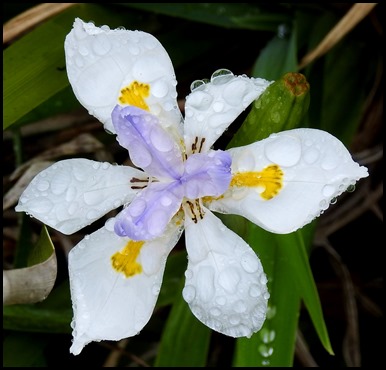 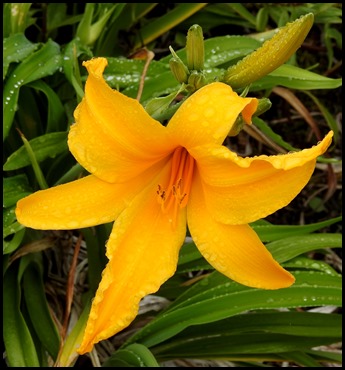 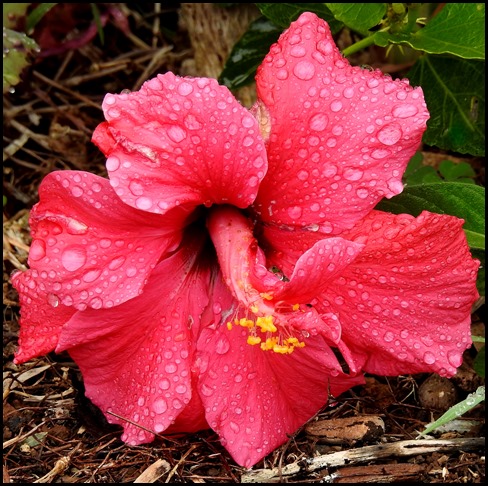 Just some of the
blooms we passed.
  We enjoyed an hour listening to the
audio tour of the house, sadly, no photographs were allowed in the house. The
lovely man in the shop took us to his wine store when I asked if I was permitted
to take a picture of a bottle of Grand Constance in the wine cabinet. “Oh, come
with me, I can do better than through glass.” So there we were ‘out back’ looking at the bottles. Wind back to a
picture I took in the main tasting room at Groot Constantia...... funny
business. The label on the wine box here reads: Grand Constance: This brand
is an important part of World Wine Heritage and South Africa’s oldest wine.
Grand Constance, the French translation for Groot Constantia, was an established
brand revered at the time of Napoleon Bonaparte, King Louis Philippe of France
and Frederic the Great, when they were clients of Groot
Constantia.
Modelled on remnants of bottles
found in the USA, Scandinavia, Europe and UK, dating back to the late 1700’s,
Grand Constance is a celebration of the legendary wines that made Groot
Constantia world famous.
The wine has an intense liquid
amber colour and is produced from Muscat grapes sun ripened on the vines,
pressed, fermented and aged in oak barrels. Muscat characteristics are enhanced
by flavours of pears, apricots, peaches and rose petals. Extraordinary.
https://www.historic-uk.com/HistoryUK/HistoryofBritain/Napoleons-Exile-on-St-Helena/ gives a bit of Napoleon’s
story at Longwood House and shows his death bed.
https://en.wikipedia.org/wiki/Longwood_House tells the story of Longwood House , now looked after by the
French and also Napoleon’s last Will (1821).
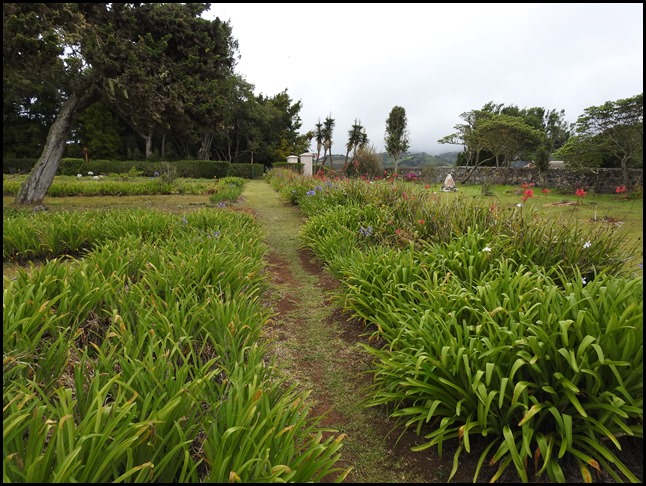 We left bimbling back through the garden and set off for Napoleon’s
tomb.
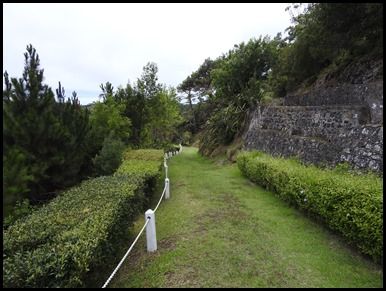   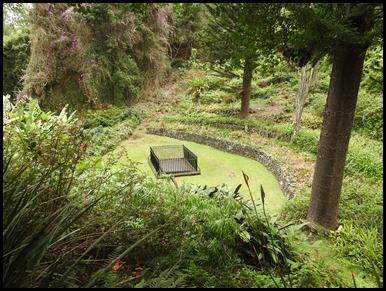 We bimbled down a well maintained path for half a kilometre until the tomb came in to sight.
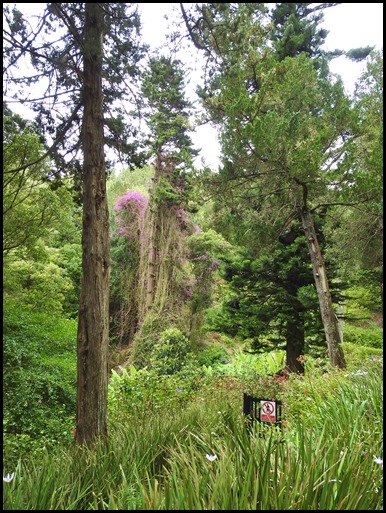  Bear stopped to admire a tree covered in bougainvillea.
  We can certainly see why Napoleon
chose this beautiful spot – what he thought would be his final resting place, until he went back to Paris. A simple grave
with no ornamentation but dignified enough. Time to leave this place.
ALL IN ALL A GOOD LOOK AT
NAPOLEON’S LAST YEARS
FASCINATING
HISTORY |